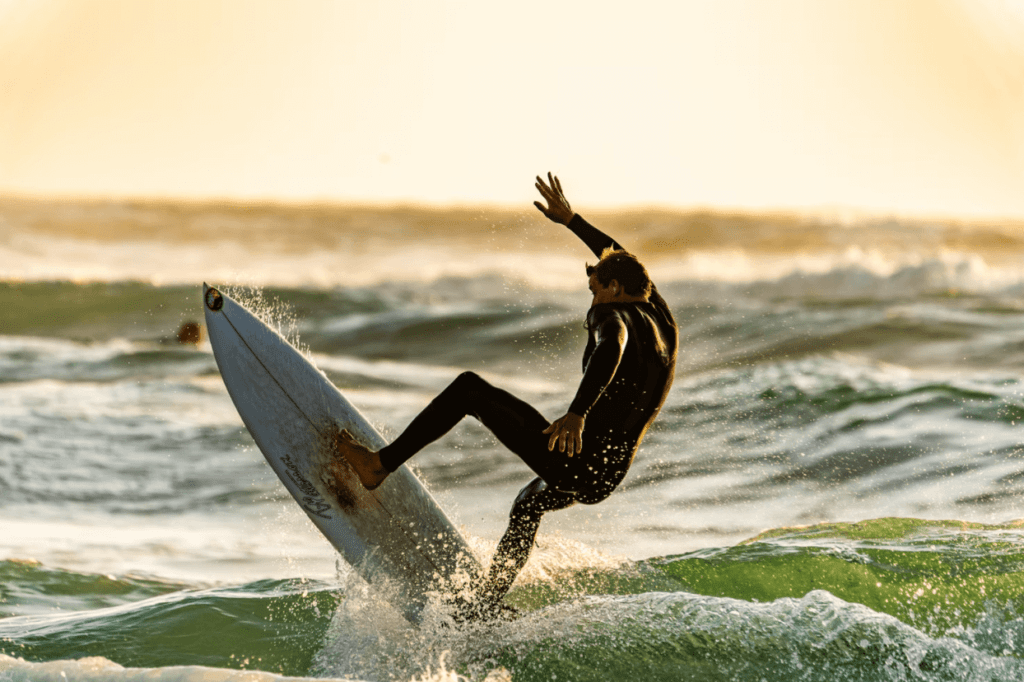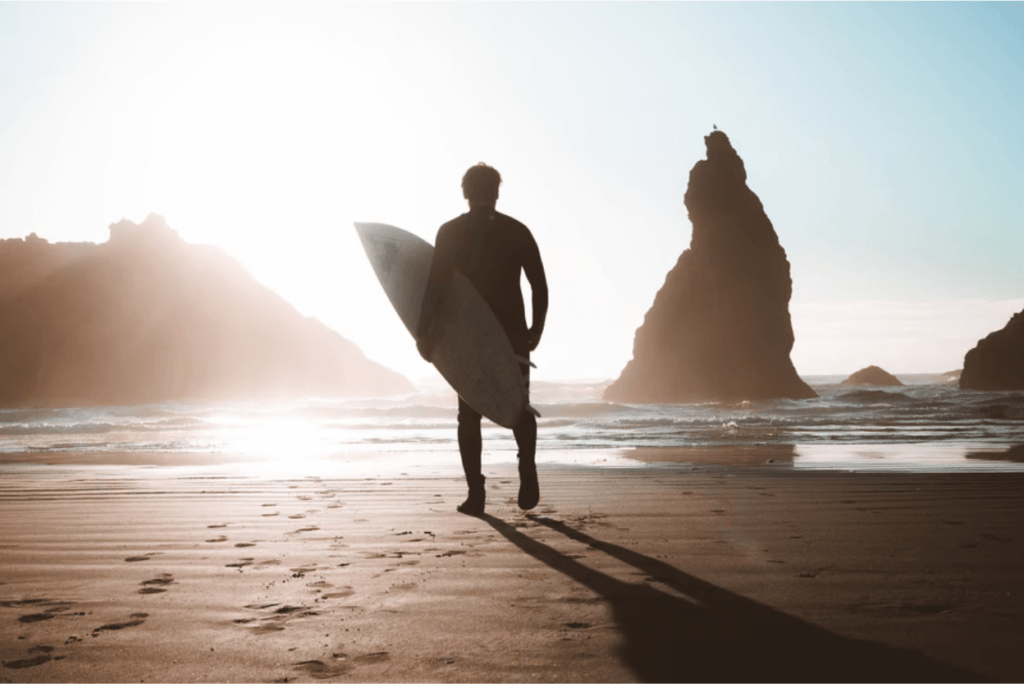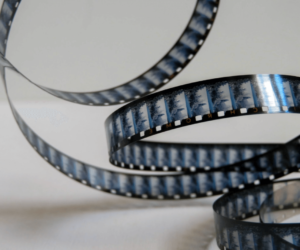What does it feel like to catch your first wave? Excitement, adrenaline, and joy all mixed together making you want to scream out of excitement. Once the feeling has passed, you think about how much fun that was and can’t wait for your next surf lesson!
Surfing is a great sport. It’s fun and exciting, but it also takes skill to do well. Here are 8 tips that every beginner surfer should know before they go out to catch their first wave.

1) Don’t be afraid of the water
The ocean is very powerful, but it’s not as dangerous as you think. If you take your time and respect the ocean, it will respect you back. When venturing on an outdoor activity like surfing, It’s important to get comfortable with the water. You don’t want to freak out after you see a wave coming because it will make it harder for your instructor to help if they need to grab you and pull you back onto your board.
Surf instructors know that some people are more nervous than others, but try not to let that stop you from catching your first wave. It’s OK to be nervous, but you will have a better time in the water if you’re not too scared to enjoy yourself!
2) Master the paddle
Surfing is all about getting into the right position on your board before that big wave comes. This is easier said than done when you are moving very fast. The paddle is the fastest way to get out to sea and the most efficient way to catch a wave once you get out far enough. If you don’t master your paddle, it’s going to be tough to get in your board’s good graces.
3) Get a Soft-top foam surfboard
As a beginner, foam surfboards are your best bet. The foam material that foam soft-top surfboards are made of is much easier to maneuver into waves than other kinds of boards. Even if you take some spills, these foam boards are soft enough to withstand them. If you take too long between sessions or even get flustered, foam surfboards are much less likely to get damaged.
As you learn more about surfing and your confidence grows, foam boards are still a great option because foam soft-top boards are super affordable. If you need foam surfboards for learners, you can find one for as low as $100. Once the foam soft-top board is mastered, you can go for glass foam surfboards or fiberglass foam surfboards, if you are interested.
4) Find a beginner-friendly surf spot
There are different types of surf spots which you can choose from to begin your surfing lessons. Beginner surfers should always make sure to check the conditions and size of the waves before choosing a designated surfing spot. The bigger, or more powerful, the wave is, generally means that it will be harder to control and ride on for a beginner.
You can also consider starting your lessons at a surfing spot that is surrounded by other beginner surfers and instructors. This way, there will be plenty of people to support you and give you advice when you need it the most. Not only will this make your learning process easier and less intimidating, but it will also allow you to interact with others who enjoy surfing as much as you do.
5) Always use a surf leash when learning to surf as a beginner
A surf leash is an absolute must for anyone learning how to surf. The leash attaches your board to your ankle, keeping you safe in the water. If you attempt surfing without one, you are highly increasing your chances of losing your board. Even if you think you are an experienced surfer, always use a leash in case of wipeouts. This is because when you wipe out, your board can drift or get carried away very quickly.
The leash is also helpful in ensuring that the waves don’t carry your board too far before you’re ready to ride them back in. If you lose your board, and it drifts off into the distance and out of sight, then there’s a good chance you’ll lose it for good. It’s important to note that while you shouldn’t be using a leash all the time, if you’re riding down the line and plan on taking an open face (not making your way back into shore), then don’t forget to take off your leash and place it in a safe place like in your board shorts or inside your board bag.
6) Master the prone position before paddling
This is the most important tip that every beginner surfer should know. It will allow you to get used to your surfboard, and it allows you to adjust to its size. Mastering this position also gives you time to understand the way the board glides across the water, while also giving you time to learn how much power or strength you need to keep it stable.
Once you master the prone position, try learning how to paddle. If there is a lot of power in the wave you will need to use all your strength and energy to catch it, if it’s not that powerful then you can paddle with less strength because the energy generated by the wave is going to help you surf.
7) Practice Knee-Overs
Practicing Knee-Overs while learning to surf as a beginner is an important skill that should be mastered before wading out into open water because it helps develop the ability to move across the face of waves while maintaining good paddle technique. When you are paddling out to get on your board, practice bringing your knees up towards your board while maintaining good paddle technique. When you feel comfortable with this movement, try turning onto your stomach and performing the motion underwater.
8) Work on your paddling technique
Working on your paddling technique when learning to surf as a beginner is an extremely important step that you should not ignore. There are several reasons why practicing your paddling technique will help you become a better surfer.
You need to know how it feels like to be properly balanced in the water with both feet firmly placed on the board. This way, you will be prepared for the waves that are about to come your way, and it will help you get better at surfing faster. The faster you can paddle through the water while carrying your surfboard under your arm, the better. You need to practice how quickly you can handle this in order to catch the bigger waves.

Surfing is one of the most gratifying sports you can master, but it’s also extremely difficult to learn. Be patient with yourself and spend time honing your skills before hitting the water. Watch videos, read articles like this one or talk to experienced surfers about their techniques until you develop your own.



